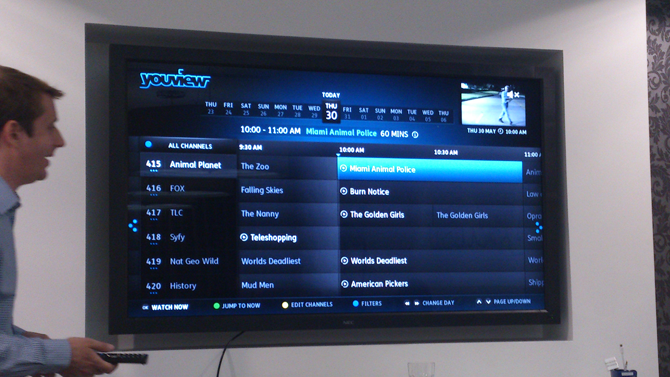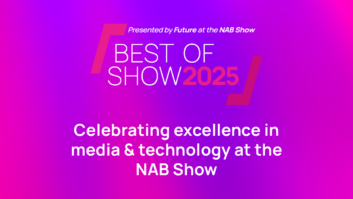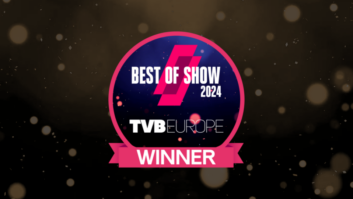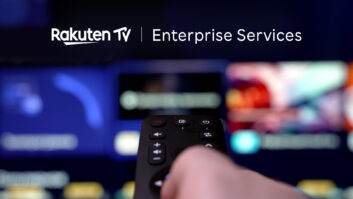Do you think the traditional EPG model has been a hurdle to finding content in the streaming world? If so, how?
The traditional EPG model, designed primarily for linear TV, can indeed be a hurdle in the streaming world, where content discovery needs to be more dynamic and personalised to suit today’s vast, on-demand content libraries. The static nature of traditional EPGs often fails to accommodate the diverse preferences of a digital audience. As a result, this model often leads to a “paradox of choice,” where users feel overwhelmed by too many options, making content discovery cumbersome and frustrating and leading to a less engaging user experience.

Looking ahead, how do you see personalisation shaping the future of streaming services in general? What steps do you think FAST services need to take to keep up with these changes?
Personalisation is poised to significantly shape the future of streaming services, including FAST services. Currently, all FAST viewers are presented with the same set of channels. However, the introduction of personalised EPGs into FAST will allow each viewer to enjoy a personalised channel, a customised channel lineup, and even a personalised programme block within a channel. This means that an unlimited amount of content can be made more consumable, with greater customisation leading to enhanced targeting opportunities for advertisers.
To keep up with these changes, FAST services must invest in more adaptive and interactive content discovery tools that better align with changing user behaviours and preferences.
One of the previous Amagi Global FAST Reports mentioned four types of personalisation. How do they differ from each other, and which one do you think has the most promise for EPGs?
Each type of personalisation offers different benefits. Geo-personalisation involves tailoring content based on the viewer’s geographic location, typically a country or region, but sometimes down to regional language and culture. Cohort personalisation takes a user’s past habits and content choices and uses them to customise content selections. Feed-level personalisation relies on general themes, topics, and existing content within the FAST service. Finally, 1:1 personalisation — essentially, an ultra-focused version of cohort personalisation — creates a unique viewing experience for each individual based on specific viewing history, binge-watching patterns, and skipped content recommendations. We expect platforms to adopt one or more forms of personalisation as the FAST ecosystem evolves.

How do you picture these personalisation strategies being put into action in FAST services? What kind of viewer data or insights would be needed to guide these decisions?
To effectively implement these personalisation strategies, FAST services would need to gather and analyse extensive viewer data, including viewing habits, preferences, and interaction patterns. This data would guide content recommendations and scheduling, ensuring that offerings are aligned with viewer expectations and preferences, thereby increasing viewer satisfaction and retention.
How crucial do you think it is to match EPG imagery with what viewers prefer when they’re discovering content? Can you think of any instances where this has worked well in the past?
Matching EPG imagery with viewer preferences is crucial as it enhances the content discovery experience, making it more engaging and relevant. Successful instances include streaming platforms that dynamically adjust thumbnails and artwork based on the user’s past viewing behaviour, significantly improving click-through rates and overall engagement.
How could FAST services tweak key art to better fit individual tastes? And how do you think this could affect how viewers engage with the content?
FAST services could tweak key art using A/B testing to determine which images resonate most with different demographics or viewer segments. Personalising key art based on viewer data could lead to higher engagement levels, as content would appear more appealing and relevant to individual tastes.
What does a FAST 2.0 landscape look like? How does personalisation and tailored content programming play a role in this new landscape? Are there any specific features or functionalities you think would be key for FAST 2.0 to offer more personalisation?
The FAST 2.0 landscape is characterised by three pillars: personalisation, interactivity, and ad sophistication. FAST services can utilise their rich content collections to create niche channels, offering hyper-personalised content options while allowing for re-monetisation of old content to maximise revenue. As for interactivity, providing viewers with control options such as toggling between VoD and linear content, expressing preferences with likes, dislikes, favourites, and content shuffling further enhances the viewing experience. Finally, to avoid replicating the cable TV advertising model, which can lead to ad drop-offs, FAST 2.0 offers non-intrusive ad formats that minimise the impact of advertising on the quality of the viewing experience.
To solve content discoverability issues, FAST services can use AI to fine-tune recommendations beyond viewing history, considering factors such as mood and scenario. They can also offer EPGs with personalisation based on location, viewer habits, overarching themes, and individual preferences. Combined with adaptive interfaces, predictive analytics for content recommendation, and enhanced interactivity, these functionalities would allow FAST platforms to offer a more personalised viewing experience that closely mirrors individual preferences and viewing habits.
What kind of roadblocks might FAST services run into if they try to implement more personalised EPGs and content recommendations? How do you think these could be overcome?
As FAST services attempt to implement more personalised EPGs and content recommendations, they may reintroduce the problem of choice fatigue. As more channels are added to FAST, viewers may become overwhelmed by the sheer volume of content — a problem they were already trying to avoid with their VoD experiences.
To overcome these challenges, FAST services should consider collaborating with as many content providers as possible to offer a wide range of channels. By doing so, they can ensure a diverse content offering while also tailoring the viewing experience to the individual preferences of each viewer. This approach could help mitigate choice fatigue and enhance viewer engagement.
How do you think viewers would react to more personalised content recommendations and EPGs? What benefits could this bring to the streaming world?
Viewers are likely to react positively to more personalised content recommendations as these can help them discover more relevant content quickly for a better overall viewing experience. This could lead to increased viewer satisfaction and loyalty.
If you were to gauge the success of personalised EPGs and content programming in terms of viewer engagement and retention, what metrics or KPIs would you look at?
Key metrics to gauge the success of personalised EPGs would include engagement rates, retention rates, time spent on the platform, and user satisfaction scores. These indicators would help assess how effectively the personalisation strategies are enhancing viewer interaction and loyalty.







